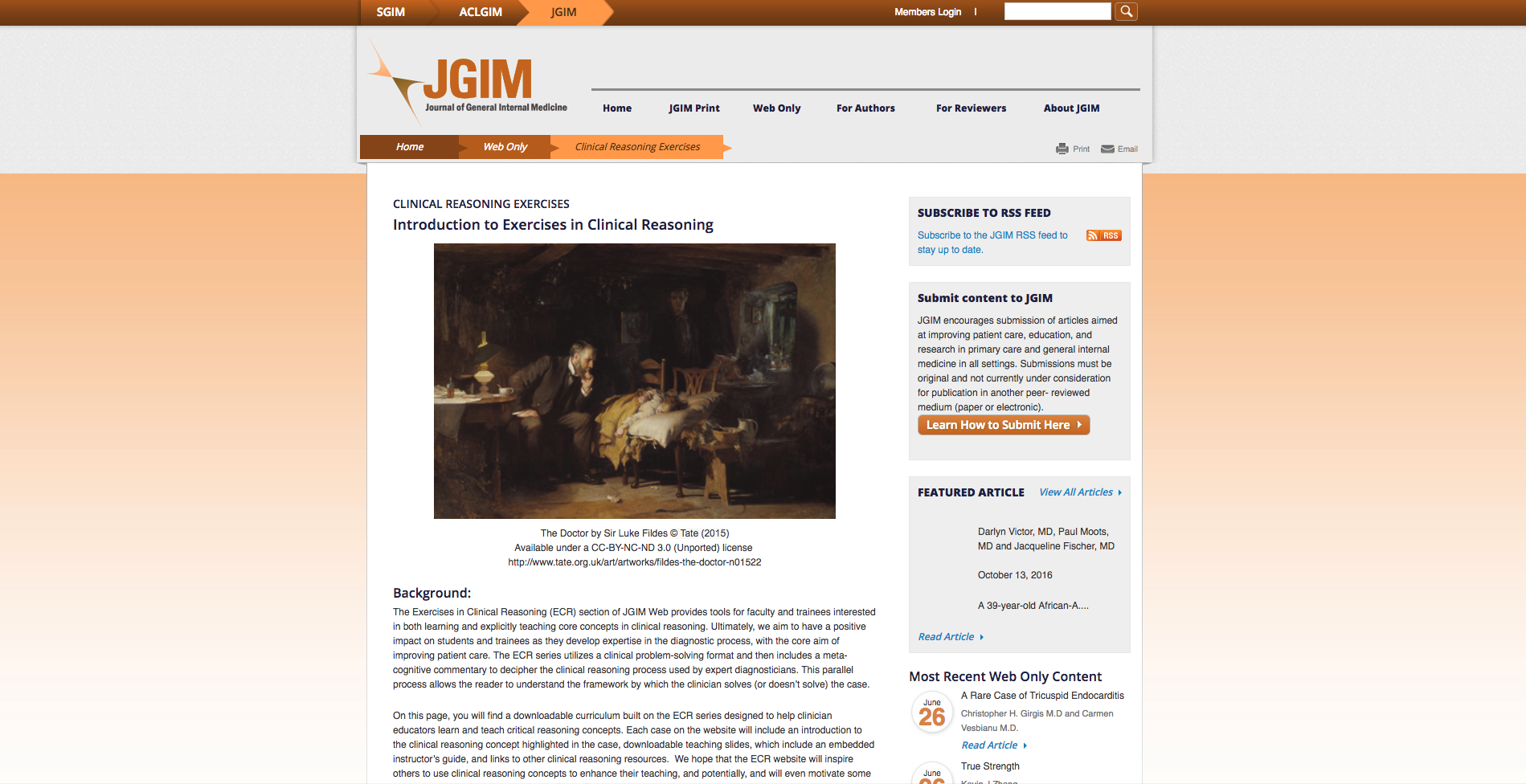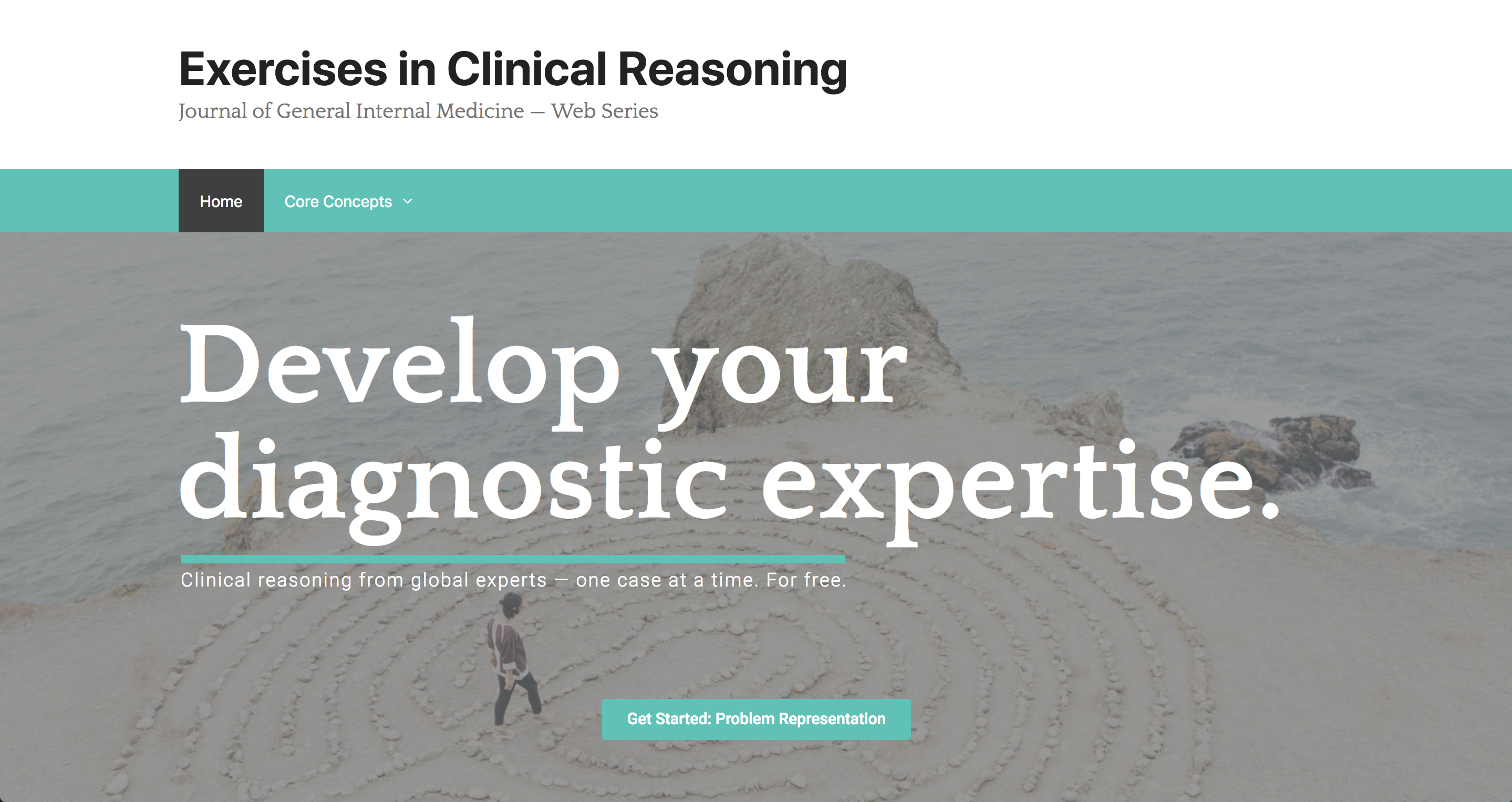Background: The Exercises in Clinical Reasoning (ECR) series in the Journal of General Internal Medicine (JGIM) is a unique and growing series of 30 case-based problem-solving manuscripts, designed to teach the foundations of clinical reasoning to both educators and students. For selected cases, the ECR team has produced teaching materials, including PowerPoints of ECR cases with discussion question prompts, and instructor guides. These novel and freely downloadable educational materials are available on the JGIM website. However, site analytics reveal that: although these materials are frequently accessed (~8100 users last year), users do not remain engaged with the material (~90% of visitors visit only one page in the website, i.e. the bounce rate = ~90%). The ECR editorial team has hypothesized that the lack of engagement is due to poor website design.
Purpose: 1. The goal of this project is to create a new, streamlined, and easy-to-use ECR website to promote free access to case-based clinical reasoning materials.2. The improved design will be evaluated for the hypothesized increased user engagement. The specific target is to reduce the bounce rate from ~90% to 70%, measured over the course of 6 months (September 2018 to March 2019).
3. The design will also be evaluated with the validated LIDA assessment tool from Minervation, a tool which provides a granular quantitative scoring of a website’s usability, accessibility, and reliability.
Description: An updated ECR website was designed using the foundational principles of visual design — proximity, alignment, repetition, and contrast. In summary, these principles respectively state that: (1) logically related elements should be placed close together, (2) elements should be purposefully positioned, (3) style conventions and patterns should be consistent throughout, and (4) use large (rather than small) visual differences in color, typography, and size. In addition to visual improvements, the redesign also included simplification of website navigation. Clinicalreasoning.org went live on September 2018, and provides free access to the ECR teaching materials.
Design evaluation utilized the LIDA tool, revealed an improvement in usability from 29 to 48 on a 54 point scale. Data from September to December 2018, when compared to data from January to December of 2017, reveals a large and statistically significant improvement in bounce rate from 87.70% (n = 8100 views) to 47.49% (n = 1625 views), p < 0.0001 using N-1 chi-squared.
Conclusions: The freedom of web resources has increased accessibility of education materials. Anyone in the world with any level of training can access ECR resources to learn, practice, and teach clinical reasoning. However, the freedom of web resources also creates an unstructured environment, where user interaction can suffer because of poor or inconsistent design. Incorporation of visual design principles and a user-centric approach to education material greatly increases immediate visual appeal and long-term user engagement.


